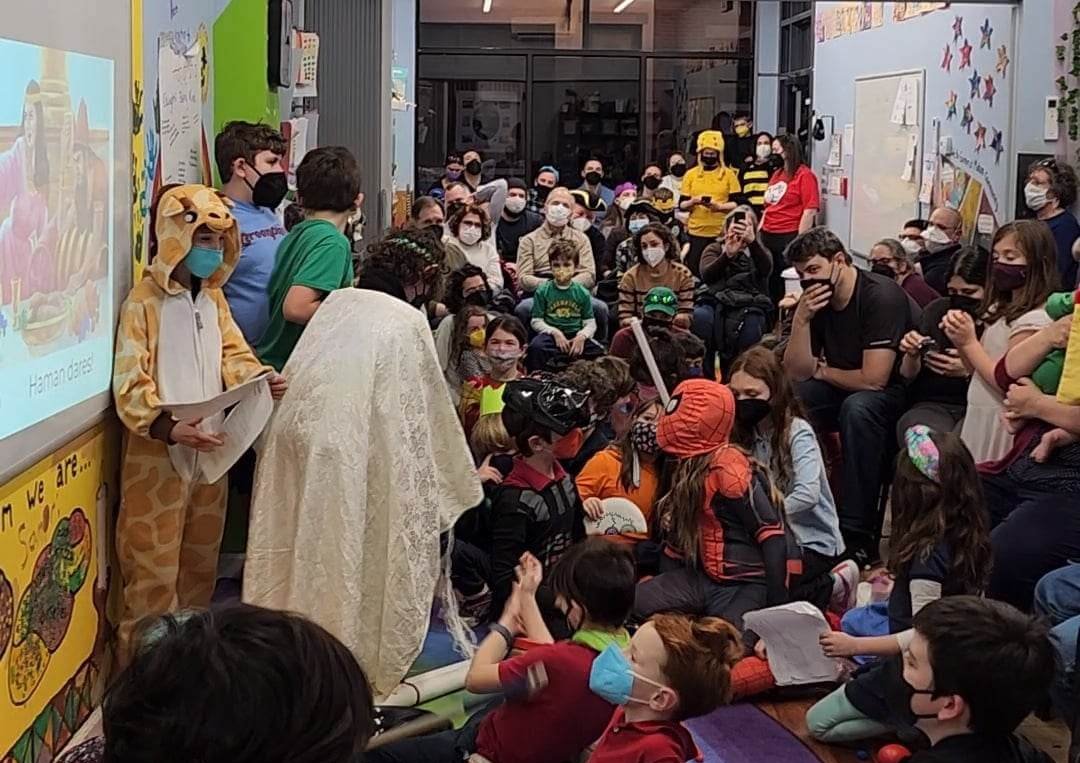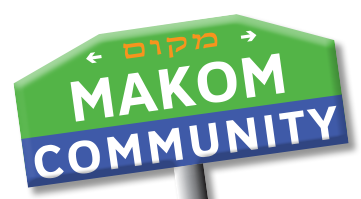
This past month at Makom Community, we have been dedicating a lot of time to learning about and reading Megillat Esther. Megillat Esther is the text that tells us the story of Purim; a story that many of you may be familiar with. In it, King Achashverosh, the king of Persia, sends his wife away for disobeying him and invites all the beautiful maidens in the kingdom so he can choose a new bride. He chooses Esther as his new bride, but little does he know that her real name is Hadassah and she is actually Jewish. King Achashverosh has an advisor named Haman who is the unequivocal villain of the story. When Esther’s Jewish uncle, Mordechai, refuses to bow to Haman, Haman convinces King Achashverosh to have the Jews in his kingdom exterminated. In the end, Esther tells King Achashverosh the truth about her Jewish roots and the Jewish people are given the opportunity to defend themselves.
Reading and analyzing the Megillah with the Anafim kids this year gave me the chance to re-evaluate this story that I had heard at least once every year since I was a child. In doing so, I got the chance to reflect on how the complexity and ambiguity of the characters we learn about in Jewish stories can actually make them more relatable.

In class, the Anafim reflected on whether the complexity of the characters in the Megillah make them harder or easier to relate to. For example, many of the Anafim students expressed their affinity for the character of Esther. She was a Jewish woman who bravely stood up for her people and saved them! One student said it was nice to see a strong woman take center stage in a traditional Jewish story. Many Anafim kids told me they felt the most like Esther out of any other character we have studied so far this year. What I think is even more interesting though is that it was easier for the kids to relate to Esther once we had discussed how scared she was to go to Achashverosh and plead for him to save her people. The Megillah mentions that seeking an audience with King Achashverosh without his permission is actually punishable by death. Esther knows she may be killed and hesitates to go to Achashverosh to help the Jewish people because of it. The fact that Esther hesitates reflects her fallibility as a human. However, the fact that she decided to do the right thing in the end is made even more powerful by the knowledge that all of these characters have the capacity for fear and error.

The conversation about how many of the Anafim related to Esther led us to discuss the importance of seeing ourselves reflected in the stories we tell. One Anafim learner told me that seeing characters in the Torah that reflect her values and personality traits makes her feel less alone. She said representation helps her affirm that the experiences she has are shared by others and that that knowledge provides her with comfort and a motivating model to follow. Hearing this made me think more deeply about how I choose to present characters in Jewish stories to my students. These characters are human beings and like all of us, they have strengths and weaknesses. Here at Makom, we prioritize the examination of both. I want the Anafim to know that mistakes, doubt, and fear do not make us weak, they make us human and provide us with opportunities for growth. The best way to do this, is to present the characters as people we can relate to rather than untouchable figures we can never measure up to.

